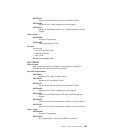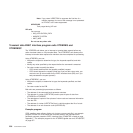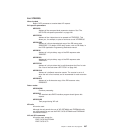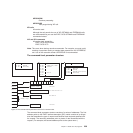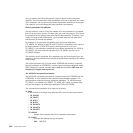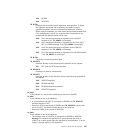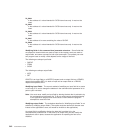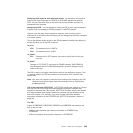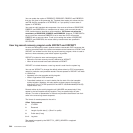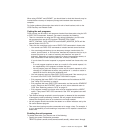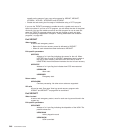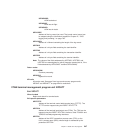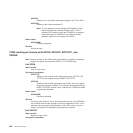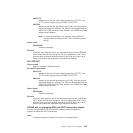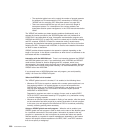Modifying fields used for both input and output: An example of a field that is
used for both input and output is LENGTH on a READQ request that specifies
INTO. You can treat such fields in the same way as output fields, and they are
considered to be the same.
Modifying the EID: It is not possible to modify the EID to make major changes to
requests, such as changing a READQ request to a WRITEQ request.
However, you can make minor changes to requests, such as turning on the
existence bit for SYSID so that the request can be changed into one that is shipped
to a remote system.
The list that follows shows the bits in the EID that can be modified. Any attempt to
modify any other part of the EID is ignored.
TD_BITS1
X'20' The existence bit for LENGTH.
X'02' The existence bit for SYSID.
TD_EIDOPT5
X'01' Existence bit for SET keyword. You cannot modify this bit from your
user exit.
TD_EIDOPT7
Changes to TD_EIDOPT7 are limited to READQ requests. X'80'-READQ is
interchangeable with X'C0'-READQ(nosuspend). No other changes may be
made to this byte.
The EID is reset to its original value before return to the application program. That
is, changes made to the EID are retained for the duration of the transient data
request only.
Note: Your user exit program is prevented from making major changes to the EID.
However, you must take great care when making the minor modifications
that are permitted.
Use of the task token UEPTSTOK: UEPTSTOK provides the address of a 4-byte
area that you can use to pass information between successive transient data
requests in the same task. (By contrast, UEPTDTOK is usable only for the duration
of a single transient data request, because its contents may be destroyed at the
end of the request.) For example, if you need to pass information between
successive invocations of the XTDEREQ exit, UEPTSTOK provides a means of
doing this.
The EIB:
Copies of EIBRSRCE, EIBRCODE, EIBRESP, and EIBRESP2 are passed to the
exit, so that you can:
v Modify or set completion and resource information in XTDEREQ and
XTDEREQC
v Examine completion and resource information in XTDEREQC.
Chapter 1. Global user exit programs 243



